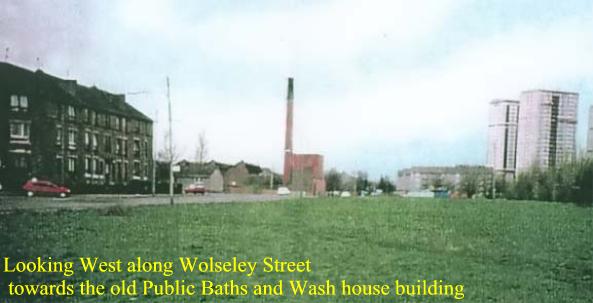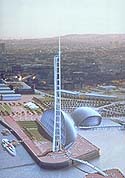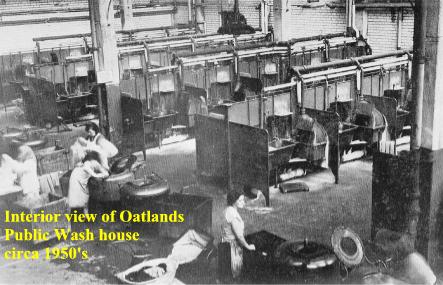Initial Recommendations
1. Transport
1.1 Design to discourage through-traffic, using careful road-network
design or some other traffic calming measure.
1.2 Design to discourage car use within the development; ensure shopping
areas and other facilities are within amiable walking distance of the
most of the homes.
1.3 Provide adequate and discreet parking
1.4 Provide usable and safe cycle paths, which connect well (internally and
externally) with the cities existing and planned cycle routes. Adequate and
secure facilities for parking and locking bicycles near shops and facilities.
1.5 Provide usable and safe pedestrian routes throughout the development,
sensibly designed to encourage residents to use them.
1.6 Infrastructure to support interconnection with the existing city bus
network, and infrastructure to support a possibly augmented service.
2. Building materials and design
2.1 Where possible building materials should be sourced from local suppliers,
with good environmental records.
2.2 Materials used should be of low embodied energy.
2.3 Dwellings should be designed to make most efficient use of energy and
resources; highly insulated, long lasting materials, double glazing etc.
2.4 All dwellings should be designed to maximise the benefit of solar radiation.
They should be orientated to allow the incorporation of passive solar spaces
for heating season gains and with shading devices to minimise summer heat gains.
Maximum benefit should be taken from solar insolation, having a large amount of
glazing on the southern facades and a small amount on the northern fašade.
2.5 The dwellings should be well sealed and airtight, and employ a mixed mode
ventilation system. In winter, a heat exchanger system, using warm extracted
air from kitchen and bathroom areas to warm fresh external air, should be employed
as a displacement ventilation system, and in summer natural ventilation should be
used with a degree of heat recovery when necessary.
2.6 Simple, comprehensible and easy to read meters should be attached on all
services; water, electricity, gas etc., in all dwellings.
2.7 Dwellings should incorporate a high level of control for all electrical functions.
Electricity use could be monitored, and where possible automatically turned off when
not in use.
All dwellings could incorporate a system of wiring to enable both local and remote
control and monitoring of internal environmental conditions, consumption metering
of fuel and utilities, remote switching of major appliances such as freezers and
refrigerators. This wiring should be terminated and connected to a field-bus
system encompassing the entire community and emanating from the former washhouse
building (see separate section).
The planned energy management and monitoring system (EMS) should
- remotely monitor consumption of gas, electricity and water
- remotely monitor internal conditions such as set-point and space temperatures.
- enable remote switching of power to refrigerators, etc. to assist in demand/supply
matching where renewable energy sources may be in use.
2.8 The design of dwellings should incorporate levels of insulation to ensure low energy
demand. The Building Standards Scotland (amendment) Regulations 1999 incorporate
recommendations and procedures to ensure that new buildings should consume
approximately 50% less heating energy compared with existing buildings.
The adoption of even higher standards could provide reductions of 75%.
2.9 The cost of heating energy in all homes should not cost more than 5% of the
value of the lowest household income.
2.10 The internal fitments within the homes should incorporate kitchens, which are
already fitted-out with 'white goods' such as refrigerators and freezers. These items
should be manufactured to standards, which incorporate the highest levels of energy
saving potential "A" or "B".
2.11 The utility area should include either 'low-energy' clothes drying equipment or
be designed to allow the introduction of the best available technology such as tumbler
dryers incorporating condensers and heat recovery by the preheating of incoming fresh
air.
2.12 Housing developers should design and construct all dwellings to identical
space standards for both private dwellings for purchase and those for rental. The
aesthetic appearance of all housing should incorporate excellent design standards
and it should not be possible to distinguish between private and social housing.
3. Waste and resources
3.1 Greywater tanks and recirculation systems should be used in dwellings to make best
use of water.
3.2 Downpipes from roofs should be designed and installed to facilitate rainwater
collection.
3.3 Road run-off should be channelled back to water/irrigate any common garden area or
allotment area.
3.4 There should be waste separation stations at frequent intervals throughout the
development.
3.5 There should be facilities for both individual and communal composting with an input
from the local Landscaping and Parks department.
4. Energy Supply
4.1 Central/district heating schemes should definitely be employed in the larger blocks
of dwellings. This will result in using less energy, cheaper bills for customers, and
better building maintenance. Investigations suggest that individual semi-detached/detached
homes are easily distinguished from social housing and should be avoided if social
inclusion is to be promoted.
The following items also indicate potential sources for such a scheme.
4.2 The former mine workings should be investigated to if there is potential to use the
groundwater as a source for heating. Water could be extracted and using heatpumps, this
could be used to fuel a district or communal heating scheme.
4.3 As the development will incorporate a large number of houses, there is significant
scope to include a Combined Heat and Power (CHP) scheme. This could be a simple gas
turbine, used to generate electricity, and the exhaust heat could be again used to fuel
a district heating scheme.
4.4 Negotiations should take place with the industries in the locality, to ascertain
if waste heat is readily accessible and is available in sufficient quantities to fuel the
heating scheme.
4.5 Ducted wind turbines (similar to those used in the lighthouse) could be employed along
the roofs of some of the taller buildings. While the potential power would not be
sufficient to service the dwellings, it could be used for lighting of common areas, or
other communal uses.
4.6 A run-of-river scheme could be incorporated in the Clyde. Similarly to the wind
turbines, this would not generate a large amount of power, but it could be used for
communal functions.
5. Environmental and Health
5.1 There are clearly areas of contaminated land within the area of regeneration.
A Public Body prior to development should identify the level of pollution, prior to
development, and the specific locations with a view to clearance.
In this way the contamination will not become a barrier to development and regeneration.
5.2 The Polmadie Burn is believed to be polluted. The types of contamination should be
identified with a view to creating a reed-bed in the vicinity of the Richmond Park prior
to the point where the burn meets the River Clyde.
5.3 An Environmental Impact Assessment (EIA) would be used to identify existing pollution
sources, their preferred methods of de-contamination and means of preventing continued
contamination.
5.4 The Health Board should plan for the construction of a satellite General Practice
centre or clinic. This would be in addition to but based and administered and supported
from the main Gorbals Health Centre. Such a satellite would avoid the use of motor cars
by ensuring that the clinic was within reasonable walking distance of all dwellings. This
would promote walking, cycling and health, Use of open spaces, encourage security,
discourage minor criminal activity and promote confidence, overcome fear and
inhibitions etc.
5.5 Low energy homes and affordable warmth ensures comfortable indoor conditions and
thereby healthful living conditions indoors.
5.6 Decontamination and the removal of pollution, would refurbish the land and return it
to a healthy condition for people going about their daily work and leisure activities.
6. Miscellaneous
6.1 The tops of large buildings should contain roof gardens.
6.2 The development should incorporate small offices which would be available to local
residents if they wished to transfer their business location.
6.3 All dwellings should be connected with more than one phone line to enable connection
to the internet and also a possible intranet.
6.4 An assessment of the present dwellings should be carried out to ensure if it is
really worthwhile keeping them. There is good reason to suggest that taking them down
and starting afresh would be more advisable.
6.5 There is also within the bounds of the site, situated at the junction of Fauldhouse Street and Wolseley Street, the former Oatlands public baths and wash house.

Constructed during 1933 and officially opened on June 1933, it
is currently derelict but of sound construction in engineering brick with its own integral
brick-built chimney.
This could be reclaimed as a University/ local Community asset.
It could provide a location for incorporating wind and solar energy plant and provide a centre of
supervisory control and data acquisition to measure and monitor progress in a sustainable
community.
Data recordings of actual integrated performance could be compared with
simulations and predictions and also with consumption patterns if no improvements had been conducted.
 The real time results and comparisons could then be viewed locally or relayed to, say, the new science centre for educational purposes. This new Glasgow Science Centre (phase one is due to open in Autumn 2000) is one of the many renewal and development schemes that have helped to provide employment and attract new investment to the city. Located at Pacific Quay, the centre is to contain a Planetarium and Exploratorium with a mixture of exhibits where visitors will learn about a range of scientific topics and engage with interactive displays.
The real time results and comparisons could then be viewed locally or relayed to, say, the new science centre for educational purposes. This new Glasgow Science Centre (phase one is due to open in Autumn 2000) is one of the many renewal and development schemes that have helped to provide employment and attract new investment to the city. Located at Pacific Quay, the centre is to contain a Planetarium and Exploratorium with a mixture of exhibits where visitors will learn about a range of scientific topics and engage with interactive displays.
The building could also fulfil a purpose as a resource for Community offices and
conference facilities including site architects and the regeneration area's project
manager.
 It might also include a local heritage centre or satellite museum facility to reconstruct
in part a 'steamie' or public wash house utilising the fitments which the nearby Peoples
Palace has undoubtedly stored in their archive stocks.
It might also include a local heritage centre or satellite museum facility to reconstruct
in part a 'steamie' or public wash house utilising the fitments which the nearby Peoples
Palace has undoubtedly stored in their archive stocks.
This would constitute a valuable community resource to increase peoples awareness of
sustainability as a subject and the choices which might be facing us all, to educate
them as to how we can avoid future problems, to change the mind-set of the whole
population and finally, to demonstrate to other cities and countries what can be
achieved and what may best be avoided.
 Return to main Proposals page
Return to main Proposals page

 The real time results and comparisons could then be viewed locally or relayed to, say, the new science centre for educational purposes. This new Glasgow Science Centre (phase one is due to open in Autumn 2000) is one of the many renewal and development schemes that have helped to provide employment and attract new investment to the city. Located at Pacific Quay, the centre is to contain a Planetarium and Exploratorium with a mixture of exhibits where visitors will learn about a range of scientific topics and engage with interactive displays.
The real time results and comparisons could then be viewed locally or relayed to, say, the new science centre for educational purposes. This new Glasgow Science Centre (phase one is due to open in Autumn 2000) is one of the many renewal and development schemes that have helped to provide employment and attract new investment to the city. Located at Pacific Quay, the centre is to contain a Planetarium and Exploratorium with a mixture of exhibits where visitors will learn about a range of scientific topics and engage with interactive displays.  It might also include a local heritage centre or satellite museum facility to reconstruct
in part a 'steamie' or public wash house utilising the fitments which the nearby Peoples
Palace has undoubtedly stored in their archive stocks.
It might also include a local heritage centre or satellite museum facility to reconstruct
in part a 'steamie' or public wash house utilising the fitments which the nearby Peoples
Palace has undoubtedly stored in their archive stocks.